Kimbe Bay diving… To understand why this bay is so special you need to gain a basic appreciation for its incredible biodiversity.
And, most importantly, the reasons for that diversity. Which I have tried to provide an explaination of on the Kimbe Bay Biodiversity page.
But, that aside… what it all means is that there is some tremendous diving to be had in Kimbe Bay.
There are over 40 sites in the bay, with about 25 of them dived regularly.
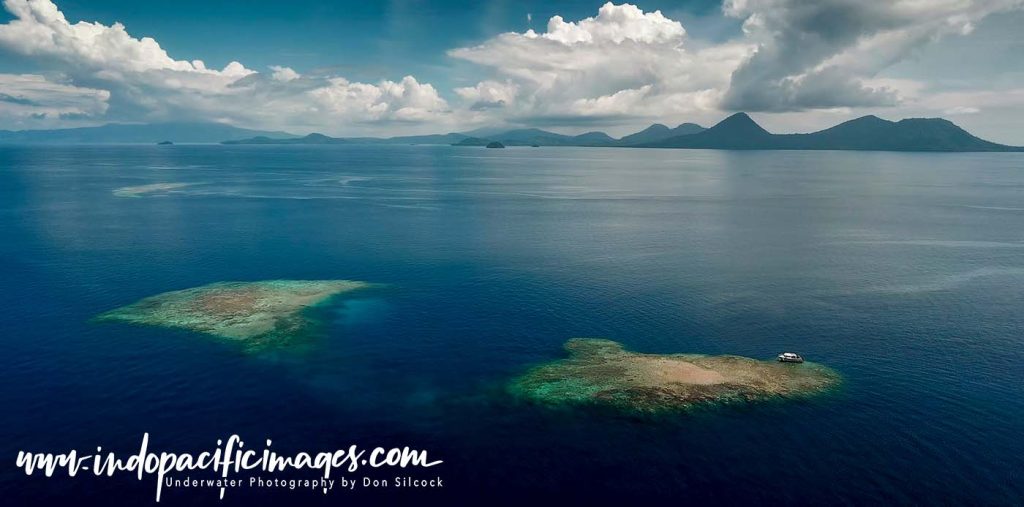
And those sites can be separated in to three distinct categories. Seamounts that rise up from the depths of the bay, fringing reefs along the inner shelves of the bay and a single, but excellent, WWII aircraft wreck.
Kimbe Bay Diving – Seamounts
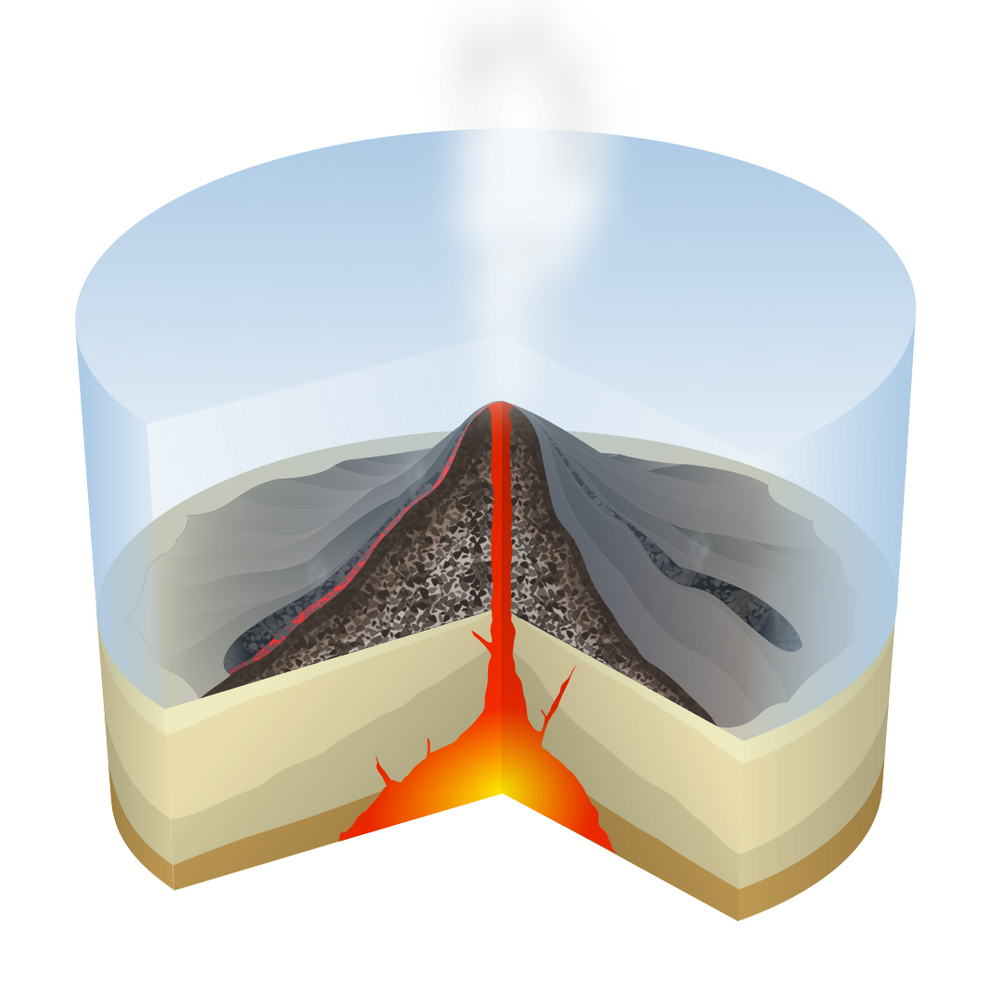
Seamounts are underwater mountains usually formed by volcanic activity and were once thought to be little more than hazards to submarine navigation.
However, scientists at NOAA now consider them as significant biological hotspots. Because their cone-like shape and steeply sloping sides induce upwellings that bring rich organic nutrients up from the depths.
Those nutrients form a reliable source of food for everything from corals to crustaceans. Which in turn creates a food-source for fish and larger creatures.
Plus their isolated nature means that they act as beacons to the big pelagics of the open ocean. In short, seamounts can be vibrant and dynamic, self-sustaining ecosystems! Which is why diving them in Kimbe Bay can be such an exhilarating experience!
There are three significant seamounts in the bay – Bradford Shoals, Inglis and Joel’s and all are fantastic dives. You can use this link to read more about the Kimbe Bay seamounts…
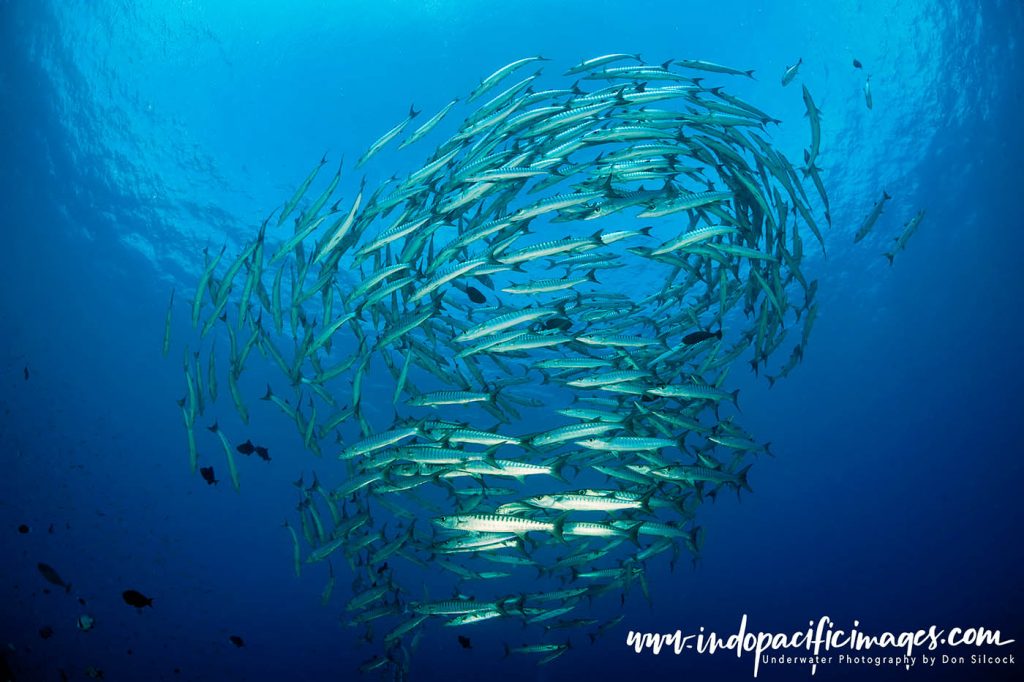
Kimbe Bay Reefs
Kimbe Bay in many ways resembles a huge, three-sided, amphitheater with its deepest areas in excess of 1000m.
And it is from those depths that the seamounts rise up…
But around the shore-line there is a sloping shelf down to around 200m, which is roughly 3-5km wide and parallel to the shore all the way around the bay.
And it is on that sloping shelf that Kimbe bay’s reefs are located. Nourished by the rich currents of the Bismarck Sea they are simply a joy to dive. Their health and overall vibrancy leave you in awe of just how amazing the underwater world is.
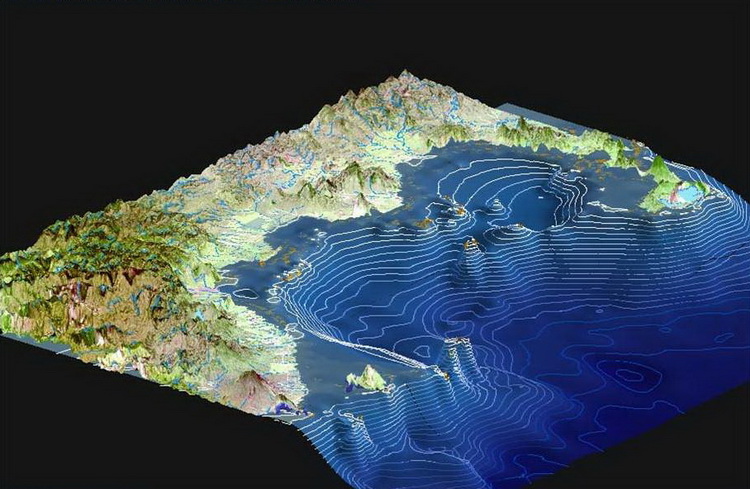

Kimbe is basically the hard coral capital of the world, with some 345 species recorded there.
Obviously not as pretty as soft corals, they do have their own special aesthetic!
Another very defining feature of Kimbe’s reefs are the bright red sea whips that are found on many of the sites.
They are very photogenic and really add color to your images!
You can use this link to read more about the Kimbe Bay reefs…
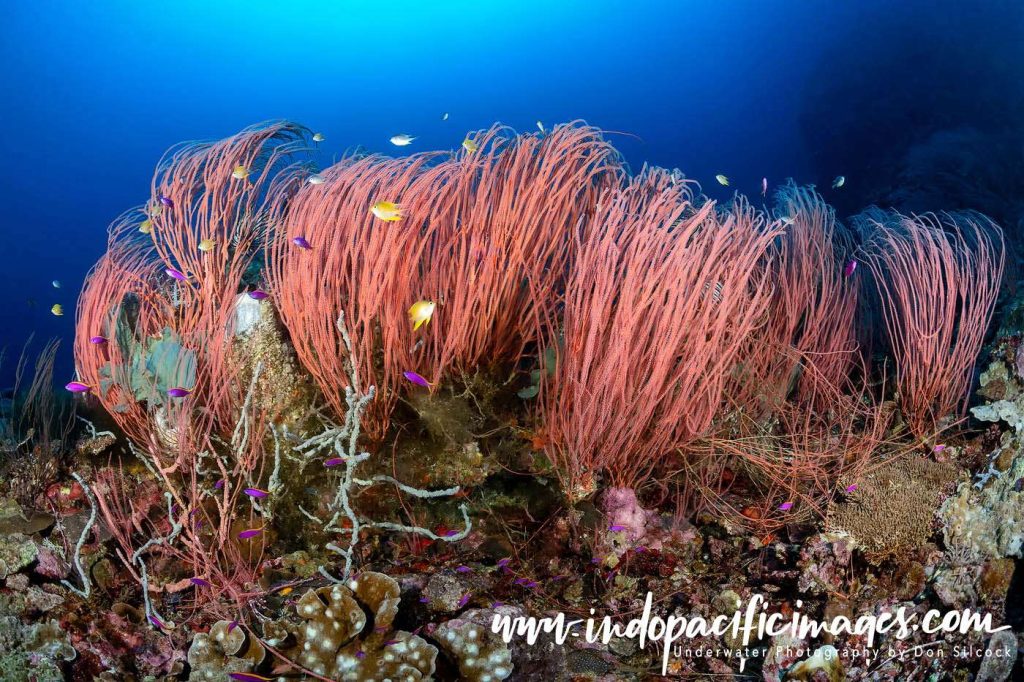
Kimbe Bay Wrecks
Kimbe Bay is not a wreck diving location at all… But it does have one WWII aircraft wreck, a Mitubishi Zero fighter that is in incredibly good condition! The story of how it was found and the backstory of what probably happened to the plane is really interestingand you can use this link to read more about the Kimbe Bay Mitsbishi Zero wreck…
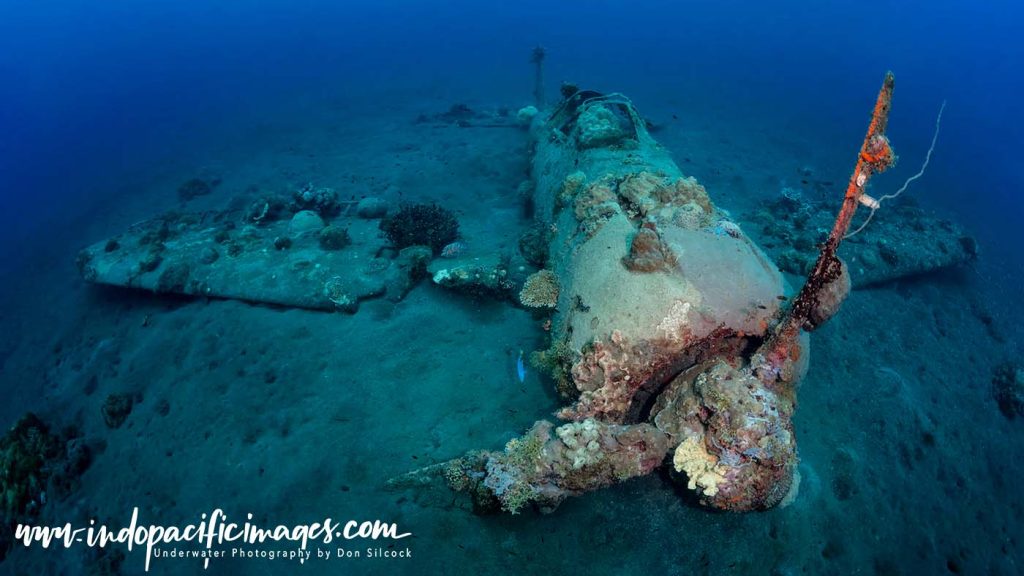
How to dive Kimbe Bay?
There are a two options to experience what is underwater in Kimbe Bay… Either you can do land-based diving from Walindi, the original and only resort in Kimbe. Or you can choose from the two liveaboards based from Walindi – MV Febrina and MV Oceania.
Walindi is a very well organized and run operation that has three day-boats that can take you to all the best sites in the bay.
A typical dive day starts at 08.00 and you can do 2 to 3 dives per day, with the third dive usually a consensus agreement between the people on the boat. But lunch is catered for if three dives are agreed to.
Febrina is skippered by the legendary Alan Raabe, who basically pioneered diving in the remoter locations around New Britain. Simply stated, nobody knows the diving in New Britain better than Alan! Febrina typically dives the best sites in Kimbe Bay at the beginning of its trips to the Witu Islands and the Fathers.
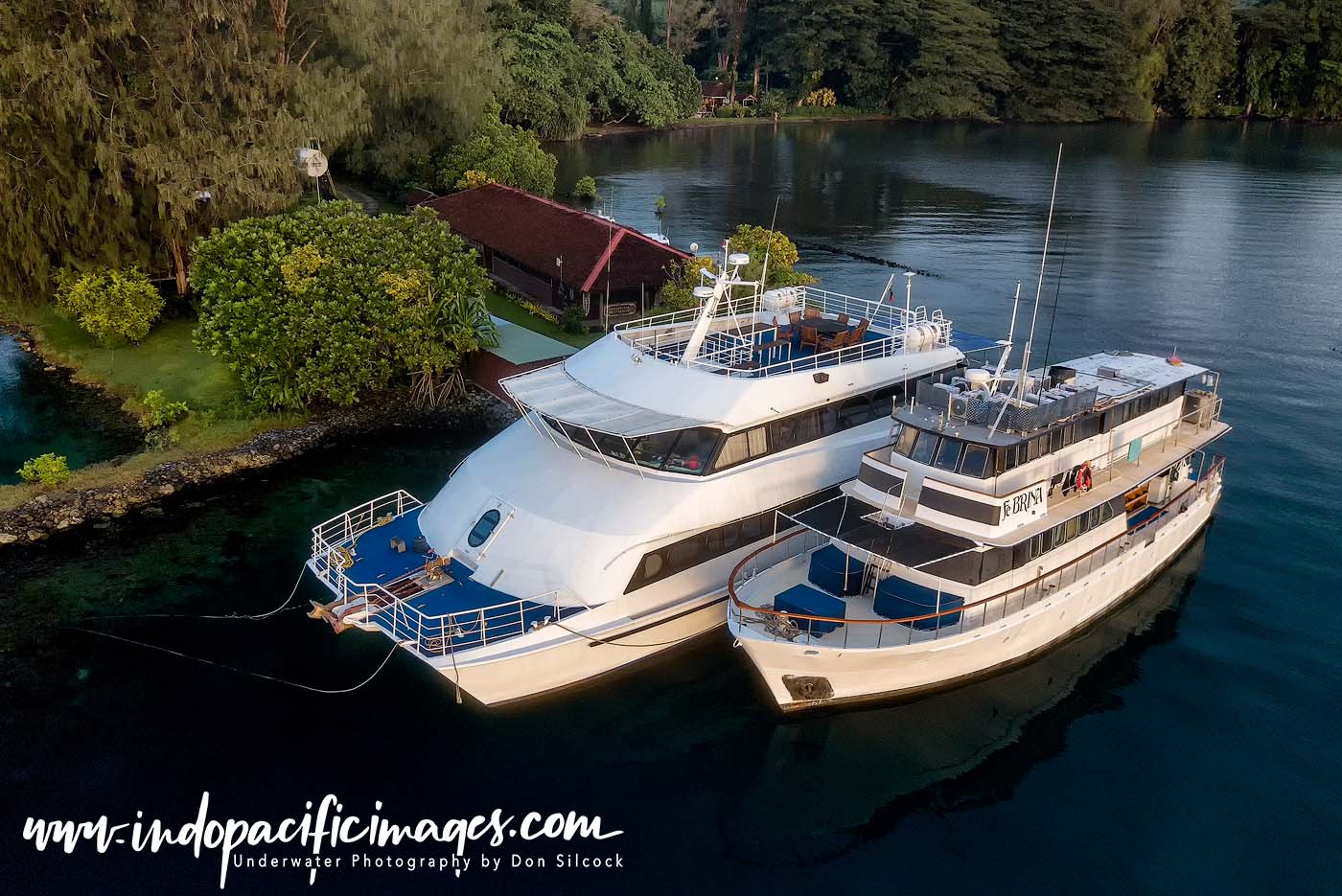
Similarly Oceania dives the best sites at the beginning and end of its trips out of Walindi. Its skipper Dan Johnson has an intimate knowledge of Kimbe Bay as he ran the day-diving at Walindi for 5 years.
When to dive Kimbe Bay
Kimbe Bay is protected from extreme weather by its unique topography. So access to the reef systems is available throughout the year, although the conditions do vary.
September – November: Calm seas and superb visibility in the range of 25m+, but slightly colder water at around 27 deg C.
December: Changeable…
January – March: The wet season in Kimbe Bay brings very calm waters, but lower visibility around 15m and an average water temperature of 29 deg C.
May – June: The doldrums – calm seas with clear skies and almost no wind. Water temperatures are warmer at around 31 deg C and good 20m+ visibility.
July – August: The monsoonal SE trade wind season with gusts up to 20 knots. Seas can reach up to 1m and the water temperature starts to drop – visibility is around 15m
How to Get There
Kimbe Bay is located roughly a third of the way along the north coast of large island of New Britain. The closest international gateway is Port Moresby. So the only way to get to Kimbe Bay is to fly there from the national capital.
The airport is called Hoskins (HKN) and is located just outside of town and is served by Air Nuigini on a regular basis. With some careful planning it is usually possible to arrive in to Port Moresby late morning. And then catch a connecting flight to Hoskins in the afternoon so that you can avoid having to stay overnight in Port Moresby.
Back To: The Complete Guide to Diving Kimbe Bay
